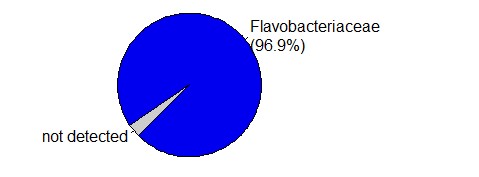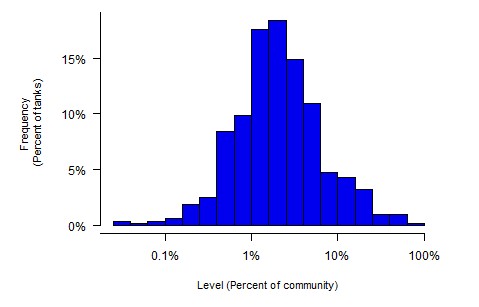The Family Flavobacteriaceae
This is a large and diverse family found in a wide range of habitats including terrestrial, freshwater, and marine environments.
They are generally aerobic heterotrophs, with extensive capabilities to degrade and digest macromolecules including proteins and polysaccharides. These Bacteria are often associated with surfaces including animals or macroalgae.
Flavobacteriaceae on coral reefs
A survey of reef habitats on the Great Barrier Reef found that Flavobacteriaceae levels were highest in waters with the highest levels of dissolved organic carbon (DOC). These levels were also positively associated with ammonia, indicating a general overall association with high nutrient levels.
The Flavobacteriaceae are found at higher levels in algal-dominated reefs, and lower levels in healthy coral-dominated habitats.
Growth experiments show that this group is promoted more strongly by algae-derived nutrients than coral nutrientsor seawater controls.
Pathogens in the Flavobacteriaceae
There are several known fish pathogens in this family, including:
Flavobacteriaceae in reef tanks

Bacteria from the family Flavobacteriaceae are present in nearly all reef tank samples.

The Flavobacteriaceae generally make up 1-10% of the reef tank microbiome.

The Flavobacteriaceae make up a similar fraction of both the water and biofilm communities in reef tanks.
Read more
Wikipedia: Flavobacteriaceae
OBIS: Flavobacteriaceae
Adjusting your Flavobacteriaceae levels
-
Increasing your levels
-
Increase algal biomass in the tank (e.g. macroalgal refugium)
-
Feed algae-derived and protein-rich foods
-
Decreasing your levels
-
Reduce feeding
-
Deep cleaning to reduce algal biomass
-
Increase nutrient export (skimmer, water changes)
Testing your tank for Flavobacteriaceae
Our standard Microbiome Test includes information on the levels of Flavobacteriaceae in your tank.
This family is strongly associated with nutrient levels on the reef, so measuring their levels in your tank is a great way to evaluate the overall nutrient environment in your reef tank. The presence of several pathogens in this group is another great reason to measure their levels.
Test your tank today to see what kind of Flavobacteriaceae are growing in your system!
